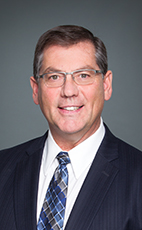April 3, 2020

Good public services and strong accountability go hand in hand. Public Accounts Committees (PAC) are key to that accountability and in order for them to improve public administration, they need to collaborate. This may seem counterintuitive to some elected officials, but it’s the key to effectiveness and the PAC of Canada's 42nd parliament proved it was possible.
Former PAC Vice-Chair Alexandra Mendès (MP for Brossard – Saint-Lambert) remembers an inspiring message delivered to the PAC of the 42nd Parliament by former Auditor General Michael Ferguson on the importance of cross-party collaboration for the public good. She added “We as a PAC took Mr. Ferguson’s message to heart. We realized quickly that we existed to make sure that the public services provide good service to Canadians”.
The 2015-19 PAC’s leadership understood early on that to provide the best services to Canadians they needed to put partisan politics aside. “As I oriented myself to the role of the PAC, I saw an opportunity to improve administration in government, rather than an opportunity to deliver knock-out punches to the government or seek headlines.” recalls former PAC Chair Kevin Sorenson.
Former Chair and Vice-Chair David Christopherson, who has served as a member of the PAC since 2004 and is a long-time believer in the importance of accountable government, sees the committee as the most important defense against government misspending and fraud. He states that the 2015-19 PAC was “as good as it gets”.
How did the PAC develop a collaborative approach?
We asked all three former PAC leaders to share their observations on how their committee developed a collaborative approach. They identified a number of actions:
- Build an understanding of the committee’s mandate by having PAC members meet with a number of former auditors general to better understand the importance and role of the PAC.
- Organize informal dinner or coffee chats with former AGs, to hear about how the PAC can improve public administration and deliver value to citizens. These meetings also provide a venue for committee members to build a rapport with each other.
- Hold preparation meetings in advance of public hearings to develop a collective understanding of what members want to find out from departments appearing before them.
- Attend the Canadian Council of Public Accounts Committees and the Canadian Council of Legislative Auditors (CCPAC-CCOLA) annual conference to learn from the experiences of PACs across Canada, and better understand why the PAC is different from other legislative committees.
- Establish positive working relationships among committee leadership. This enables the leaders to re-focus when the committee does become partisan.
- Recognize when partisanship is creeping in, which can sometimes involve taking action to reset the tone of the meetings.
- Highlight when audited entities are doing things well. This will not seem partisan if the committee is also correcting deficiencies.
 |
“I am very proud of what we accomplished on the PAC. I hope that returning members share their experience with the new members of the committee. It is better for Canada when the PAC works for Canadians and ensures that government departments are ‘doing service well’.” Alexandra Mendès (MP for Brossard – Saint Lambert and former Vice-Chair of the Federal PAC) |
 |
“Save partisanship for the House. The PAC should be a committee that every MP wants to serve on. You will gain a good understanding of how government departments operate.” Kevin Sorenson (former MP for Battle River - Crowfoot and former Chair of the Federal PAC) |
 |
“You are the inheritors of the best PAC we have had in the modern era. Remember, the goal of the PAC is to change behavior, not get headlines.” David Christopherson (former MP for Hamilton Centre and former Chair and Vice-Chair of the Federal PAC) |
What were the results of collaboration?
Ultimately, taking a collaborative approach helped the committee productively carry out its work. During the 42nd Parliament, the PAC:
- Passed 72 unanimous reports and issued 346 recommendations.
- Obtained unanimity in decisions and the approval of reports, and PAC members showed more willingness to share time during hearings and build on each other’s lines of questioning.
- Members’ back-and-forth exchanges were cordial and friendly, often complimenting each other for good lines of questioning.
- Avoided partisanship even during contentious issues.
- Departments were more responsive to the committee after they learned that the committee would follow up to see if recommendations were being implemented. Departments also seemed to take action plans and reporting responsibilities seriously.
How can members promote the importance of the PAC?
Promoting the importance of the PAC is crucial within the committee but is also important outside the committee with other MPs. Using caucus meetings to promote the work of the PAC is an effective way to inform caucus colleagues about the unique role of the PAC in improving the public service.
CAAF observations
Effective PACs focus on the administration, not the merits, of policies. Cross-party collaboration can be encouraged by members choosing to focus on public administration, rather than using committee time to promote their party’s policy position. The purpose of the committee is to examine how things were done, not why things were done. The recent experience of the Federal PAC shows just how important it is that the committee leadership and its members understand this unique role of the PAC.
Seeking consensus/unanimity in decisions, reports, and recommendations can also help the PAC ensure that its positions are non-partisan and encourages the committee members to find common ground.
If you are interested in learning more tips on how to improve cross-party collaboration within your PAC, you can check out our Oversight Tips article on the topic here.
See more Featured Oversight Practices


